Новости
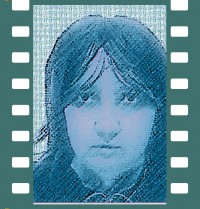
Rabbit and a black bird. Serious conversation begins
Black bird
I often came to watch
at the roses
in the garden of the rabbit.
She kept silent.
Black bird
again arrived.
Rabbit said
(he had a rehearsal that phrase):
«Do you see these fine
tea roses?
They disbanded today in the morning».
«It seems I forgot glasses», -
murmured black bird.
Again she paused.
Soon after, she left.
But the rabbit was satisfied.
Start a serious conversation.

Англоязычное издание Music Radar проводит среди своих читателей опрос: какая гитара, стоимостью до $500 может считаться лучшей? Результаты его будут известны в ноябре, после их опубликования мы присоединимся и расскажем о победительнице – лучшей бюджетной гитаре 2013.
А сейчас стоит заметить, что сегодняшнее время для начинающего (да и опытного) музыканта весьма благоприятно. 20 лет назад очень сложно было найти дешевый, но достойный инструмент. Сегодня их несколько десятков.
Что касается конкурса от Music Radar, то в нем принимают и весьма известные в нашей стране модели гитар. Перечислим несколько.
Cort G110 – страт с хамбакером у бриджа. Сделан из агатиса (тропическое хвойное дерево, хотя хвоя очень похожа на листья). Инструмент стоит порядка $200 (~6 000 руб.).
Yamaha Pacifica 112V. Тоже страт, тоже есть хамбакер, но корпус подороже – из ольхи. Потому и цена выше – около $300 (~9 000 руб.).
Squier Bullet Strat. Это просто классика, пусть и бюджетная. Три сингла, корпус из “медового” дерева – липы. Цена по аналогии с Cort G110.
Dean Vendetta XM. Вновь претендент из разряда “двухсотбаксовых”. У него два хамбакера. Очень интересный корпус – из Адамова дерева (Павлония). Название романтическое, музыкальные свойства до конца не изучены, а инструмент нацелен на тяжелый звук своим видом.
Ibanez GAX30. Модель, цена которой соответствует Yamaha Pacifica 112V, но по форме это SG с парой хамбакеров. Вновь корпус агатисовый.
Итак, есть из чего выбрать. Может победитель будет и не из этого списка – скоро узнаем. А пока интересно, что бы предпочли читатели нашего сайта?

Летний фестиваль молодежной музыки KUBANA в этом году отмечает свой 5-летний юбилей. И готовит своим посетителям сразу два подарка. Во-первых, было сменено место дислокации, это мероприятие решили сдвинуть ближе к югу, вернее в сторону юго-востока вдоль побережья. Нынче оно пройдет на станции Благовещенская города Анапы в период с 1 по 7 августа.
Второй сюрприз – открытие детской площадки, которая будет работать с первого дня. Там разместится книжный автобус с любимыми произведениями маленьких гостей фестиваля, а читать их будут ни кто иные, как сами музыканты. Кроме того, появится на желтом песке и цирковая мастерская, где ребятишки смогут научиться хождению по канату и другим трюкам.
Более того, KUBANA сооружает новую сцену – детскую. Где будут выступать такие коллективы, как «Рок-Грызуны» и «Приключения Электроников». Но дело не ограничится одними концертами, музыканты откроют настоящую рок-школу, где маленькие любители такой музыки смогут взять уроки по игре на гитаре или барабанах.
В общем, летний фестиваль теперь расширяет свои границы и вносит разнообразие. Вплоть до того, что зрители смогут увидеть даже театрализованное представление, а именно панк-оперу Emir Kusturica «Time of the Gyspsies».
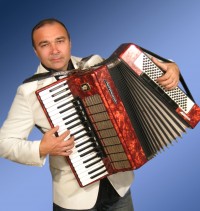
Аккордеонист, автор – исполнитель концертной программы
«Головокружительный аккордеон».
Владею хорошей техникой аккомпанемента. На синтезаторе
записал концертную программу «Классика джаза». Играю во многих стилях: джаз,
поп, варьете и т.д. Пою и аккомпанирую себе в стиле шансон, ВИА 70-80.
Образование высшее,
Дипломант Международного Конкурса 2006 г.. Вредных привычек не имею.
Стрессоустойчив.
Моё видео You
Tube - ACCOBAND58
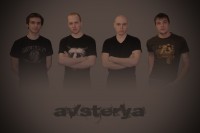


I'm sure you'll agree that Internet is an amazing thing for musicians: we can communicate without any limits and promote our music. But what'd you say about making music online together? I'm not kidding! It'll be even more amazing, i guess, if we could create music with our friends no matter how far they are from us or find new ones making songs and melodies together. So we on MusicHunt offer you to try that. We call this special place a Workshop.
I think you all know Wikipedia — a website where people share their knowledge about different things. They work on each article together. Anyone can join so it's fun and effective. In Workshop we use the same idea. Someone posts his music or lyrics with description of how he sees the result and what help he really needs. Other musicians publish their variants and comments. That's all. Pretty simple.
Think about the advantages. You can realize anything you want and try yourself as a composer, arranger or performer in any musical style without leaving home. Everything you need is to be online! But there's no need to talk much — test it by yourself, join the world of free creativity now!
Register NowAdd New Project

Today we have an interview with Gennadiy Sled: a composer from Bratsk, Russia, the author of more than 300 songs in many different styles. You can listen to his compositions here: http://www.musichunt.pro/en/user/audio.htm?id=811
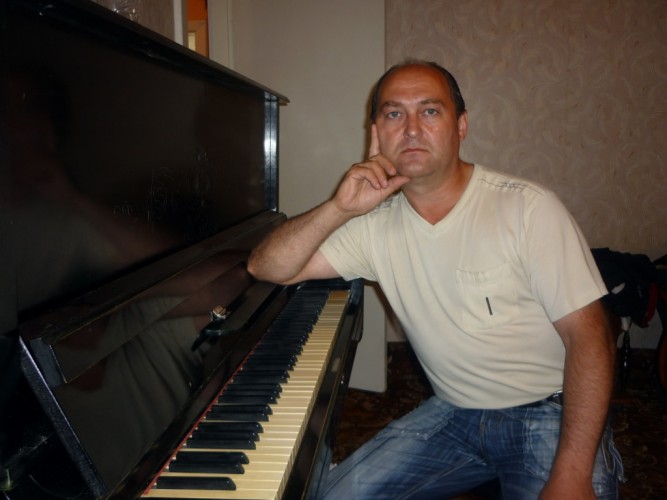 Gennadiy, Hi! Tell us, please, about yourself? How happened you chose music as your profession?
Gennadiy, Hi! Tell us, please, about yourself? How happened you chose music as your profession?
Good evening! It happened suddenly, I didn't even think about it. I don't know why but on my birthday my parents presented me a guitar (it wasn't often at that time, and guitars were not sold in such quantities as they are now). That was on 9th of August, 1980. It happened so that I managed it in a week after two weeks I became a member of a school ensemble and after 2 months my friends and I gave our first school concert.
And what was your first professional ensemble?
From 1989 till 1991 I gathered a strong band called "Red Book".
When did you begin to compose music yourself? And what was your first impression about the process?I had been writing lyrics already since 4th grade in school, and began to compose music in 1980, right when learned to play guitar. My first impression — maybe, I was glad that all was turning out so well and I liked it.
Can you mark out composers, musicians who had the most influence upon your creative work?
There were a lot Russian and foreign artists — it's unpossible to name them all. From foreign: Eric Clapton, Elton John, Joe Cocker, Pink Floyd, Eagles... From russian: Voskresenie, Mashina vremeni, Arsenal, Cruise, Stas Namin and etc.
Yes, it feels that your compositions experienced their influence. Say, from your point of view: what's more in composing of music — inspiration or maybe work? Such question has appeared recently in Blogs :)
About work — I've never really thought about it, it comes to me with ease... The moment and all is done... And I always have an inspiration: I see something and here it is, remember something and here it is again. But after the song is born it's necessary to work, and it's natural, I think.
Besides, about inspiration. Somebody is inspired by nature, somebody by people, somebody by ideas, somebody by spiritual development. What gives an inspiration to you?
All I see, all I feel — reality.
How do you think: is discipline absolutely necessary for creative person or he must break all the routine? What is your lifestyle? And what qualities does every good composer need in your opinion?
Composer must be undoubtedly honest. It's a need and will be presented everywhere, especially in his songs, because composer brings his compositions to people. Discipline must be too within reasonable limits. It's a must to keep reasonable limits in everything.
My lifestyle — not to waste my time, but with good and kindness. I try to use all the time effectively. Do not exclude rest: it is also necessary, but also within reasonable limits.
I think, that many musicians know the problem when in the head suddenly appears a short melody, a beautiful element, but they don't know what to do with it: how to make a full composition from a short episode? Have you ever faced the problem of "How to start"? And what you can recommend to solve it?
I can't remember such moment: if some idea comes to me it unfolds — I can hear it almost accomplished. So I can't recommend anything, there's no problem for me.
I see. Can you tell us a little about your current creative activity?
Now I've at last got down to my solo albums, I write three at the same time, different in style and sound. First one is in blues-rock style. Second — I can't mark out some definite style, because there will be several joined in it, but the most important thing is lyrics and I count upon vocal. Third one I write specially for female vocal, because some songs are about female point of view on life.
Did you write only for bands before?
From the beginning of my creative work I wrote both for bands and for myself. Since 1980 in our bands we'd performed my songs, and approximately until 1986 only my songs'd sounded on the concerts.
Were you a vocalist during performances?
I performed as a vocalist during concerts of my bands but there were concerts when more than 20 people performed my compositions...
Oh my, quite a lot!
Yes, sometimes there were 4-5 performers in one program
How many songs have you written? Roughly?
I didnt't count, a lot... About 300-350. But I don't think about it, simply write.
And how do you manage to promote your compositions? What are the most efficient ways: is Internet a good way? Or more by private contacts with old clients?
There weren't such abilities for making records in past. I haven't really promoted my works yet and I don't rush to the scene by myself. Never used personal contacts. I guess Internet must help but I haven't noticed yet. I think there's no need to speak about people I worked with. I prefer to remain "shadow" composer.
Why? Some're even ready to steal to become famous. Do you feel comfortable to give your songs, when nobody even knows you wrote them?
There's no secret about compositions I make for my own performance. But you know, that composers often sell their songs. I prefer to keep in secret whom do I sell mine and that's why I don't show serious compositions.
I'm a man of honor: if I sell nobody will know about it. From me at least. And those ones I won't ever sell will be performed by me or by people who deserve that.
Yes, I understand that. But do you count more on composing for yourself or on selling music to others in future?
For myself, of course. Selling songs is to survive. In general I write them for people, I don't want to do anything only for myself. I write the truth, and the truth must be heard. Maybe my songs will help others to work something out.
Yes, when you do something for other people it brings you energy. Unlike when you do only for yourself. Well, thank you for the interview! I wish you every success in your work! And for your music to be heard and loved by as many people as possible.
Thanks! I enjoyed the conversation too!
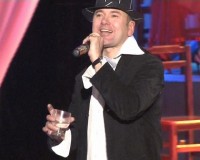
SHOW-PROGRAMMA PREDLAGAETSJA V RAZLICHNYH STILAH I NAPRAVLENIJAH.LATINO...DISCO FEVER..JAZZ-TANGO
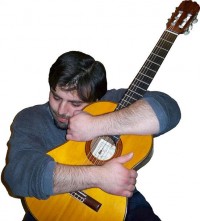
Luego de varios a?os de ser guitarrista (o hacer el intento como siempre digo), habiendo pasado por el lugar de alumno, oyente y docente, me he encontrado con la necesidad de escribir alg?n aporte a este mundo tan maravilloso como es la guitarra.
No est? dirigido solamente a un grupo en especial, lo he pensado como una herramienta tanto para alumnos como docentes.
Quiz?s no sea compartido por todos, pero esta es mi humilde punto de vista con lo que respecta a la ejecuci?n instrumental.
Cinco Puntos Clave para la Ejecuci?n Instrumental
A) Revisar la Postura / T?cnica.
B) Realizar mentalmente el movimiento.
C) Ejecutar la pieza o fragmento.
D) Trascender mentalmente para ver y escuchar lo que uno esta ejecutando.
E) Sobre el descanso previo, durante y luego de la ejecuci?n
A) * Sobre la postura corporal general para la ejecuci?n
?sta no debe ser distinta, es decir, adoptar una posici?n diferente al quehacer diario, a la cotidianeidad del andar humano. Es decir, como ejemplo preciso, uno no camina por la calle con la mano contra?da, a modo de agarrotada, el codo doblado y hacia fuera, con un hombro m?s elevado que el otro, entre tantas otras. En resumen, sin deformar la postura corporal, corriendo el riesgo de sufrir alg?n contratiempo (llam?mosle dolencia ?seo-muscular)
* Sobre el uso excesivo de la fuerza y el derroche de energ?a.
Debemos recordar que el uso excesivo de fuerza (la mayor?a de las veces innecesaria) en ambas manos, nos puede acarrear problemas, a veces tan o mas graves que la misma N?mesis de los guitarristas (y otros tantos g?neros instrumentales)… La Tendinitis.
Generalmente las dolencias, por el mal uso de la fuerza, provienen de la mano izquierda. Un m?todo sencillo, pero eficaz, para comprender la cantidad de fuerza necesaria (ll?mese “presi?n en las cuerdas”) es colocar uno a uno los dedos de la mano citada, preparados para el ataque (de punta), sobre las distintas cuerdas (desde la m?s aguda a la m?s grave) y comenzar a presionar levemente, mientras tocamos la misma (cuerda) haci?ndola sonar con la mano derecha y aumentando la presi?n sobre la cuerda hasta que ?sta deje de cerdear y se obtenga un sonido claro. Lo importante aqu? ser? tratar de recordar, comprender e interiorizar la cantidad de fuerza utilizada. Luego pasamos al siguiente dedo y as? hasta completar los cuatro, para seguir sobre la cuerda siguiente.
Otro punto importante es la contracci?n muscular innecesaria que realiza el pulgar de la mano que ataca el m?stil, a modo de PINZA. Cuando esto sucede, corremos el riesgo de sufrir una afecci?n, a corto o largo plazo, en el M?sculo Extensor Corto del Pulgar (situado cerca de la mu?eca) o quiz?s tambi?n en el M?sculo Oponente del Pulgar. Cabe mencionar que el pulgar deber?a ser usado solo como apoyo de la mano en el m?stil de la guitarra, y que en ning?n momento es activo participante a la hora de pisar (presionar) directamente las cuerdas. mentalic?monos que al ejercer una presi?n innecesaria, no solo utilizamos fuerza extra y podemos contraer problemas que esto acarrea, sino que tambi?n nos resta movilidad tanto en la ejecuci?n estable (en una posici?n determinada) sino que nos dificulta, asimismo, el traslado o cambio de posici?n.
* Sobre la postura del brazo
Al hablar sobre el brazo que corresponde a la mano que ataca el m?stil, debemos hacer especial hincapi? en la flexi?n del codo (ya que facilita un ataque preciso) y en la separaci?n del mismo del cuerpo, siempre dependiendo en que lugar del m?stil nos encontramos. Los extremos no son buenos, es decir, no es bueno tenerlo pegado al cuerpo ni tampoco tan separado del mismo (a modo de “salir volando”). Deber?amos encontrar un punto intermedio entre estos dos extremos.
* Sobre la ceja, cejilla o cejuela
Una forma correcta de abordarla es mentalizarnos que no solo la mano es la ?nica part?cipe al momento de realizarla. Deber?amos enfocar en distribuir el esfuerzo en varios grupos musculares que abarcan el conjunto perteneciente a la mano, el antebrazo, el brazo y parte del hombro. De esa forma distribuir?amos el trabajo y el esfuerzo.
* Sobre la Mano Derecha (o izquierda dependiendo el caso)
?sta es la encargada de darle sonoridad al instrumento. Debemos ser capaces de diferenciar los diversos matices de sonidos que podemos obtener dependiendo el lugar de ataque (Cerca del puente o cerca del m?stil, citando casos extremos). Es recomendable realizar ejercicios para poder controlar e independizar los dedos que la conforman, poder controlar la fuerza necesaria para poder obtener el matiz y la intensidad deseada. El ideal es que cada uno de los dedos tenga la misma fuerza y destreza.
La correcta postura de la misma, sumado a lo antes expuesto, es lo que nos evitar?, a futuro, algunos inconvenientes t?cnicos y posibles dolencias.
El guitarrista deber? buscar una posici?n que le permita trasladarse r?pidamente de un extremo a otro, para as? obtener un r?pido efecto auditivo sin p?rdida de sonido durante el transcurso o cambio de ubicaci?n.
Jam?s se deber? forzar la mu?eca hacia un extremo u otro, siempre se deber? buscar la comodidad del ejecutante ante todo, para no crear as?, tensiones innecesarias en la misma.
B) Antes de realizar la ejecuci?n de los ejercicios, estudios u obras, es recomendable que el ejecutante sea capaz de visualizar mentalmente los movimientos que deber? realizar durante el pasaje o la obra completa. A modo de entender, sin necesidad de tocar, cu?les son los requisitos t?cnicos que demanda la pieza musical. Si tuviese alg?n inconveniente con alg?n pasaje espec?fico, deber? analizar el movimiento mentalmente y ver las posibles soluciones t?cnicas y de ejecuci?n para luego llevarlas a la pr?ctica.
C) Luego de imaginar el movimiento adecuado para la ejecuci?n, se llevar? a la pr?ctica, teniendo en cuenta todo lo visualizado anteriormente. Si en alg?n punto nos encontr?semos con alguna dificultad t?cnica, se deber? retomar ese pasaje a la menor velocidad posible, a modo de interiorizar el flujo motriz adecuado, para luego ir acrecentando la velocidad paulatinamente hasta poder dominar dicha acci?n. Siempre teniendo en cuenta el punto B.
D) Luego de dominar el pasaje u obra, el guitarrista deber? tratar de trascender a un plano en el cual sea capaz de escucharse y verse a si mismo. Esto es para poder lograr la transmisi?n no solo auditiva, sino corporal (ya que el movimiento y expresi?n del mismo es capaz de comunicar sensaciones m?s all? de lo auditivo). Matizar o “darle el toque personal” es lo que se busca en este apartado.
***Los puntos B y C deben ser trabajados en paralelo***
E) Es muy importante el descanso en el m?sico. Porque esto facilita una mejor comprensi?n mental de lo que estamos por comenzar a tocar, o estamos tocando.
Un cuerpo bien descansado rinde mucho m?s que uno que viene trabajando desde hace muchas horas, no es bueno sobrecargar de trabajo a los m?sculos y tendones que tanto necesitamos.
Si durante la ejecuci?n sentimos fatiga muscular, lo recomendable es el descanso inmediato del grupo que sentimos afectado (generalmente son las manos, espec?ficamente los tendones). Para no correr el riesgo de sufrir una distensi?n muscular o una TENDINITIS.
Antes y luego de finalizar la ejecuci?n o el estudio de alguna t?cnica en especial, es recomendable realizar ejercicios de motricidad fina abocados a las manos, y ejercicios de motricidad gruesa, orientado a los grupos musculares que entran en juego a la hora de ejecutar.
Luego de finalizar la ejecuci?n es recomendable elongar todos los grupos musculares afectados al trabajo previo, como por ej. la espalda baja (zona lumbar), los b?ceps, tr?ceps, antebrazos, etc., y as? reducir la tensi?n muscular y relajar el cuerpo. Todos estos ejercicios contribuyen en la relaci?n recuperaci?n y fatiga por esfuerzo, tambi?n se logra una mayor econom?a de esfuerzos por una facilitaci?n de la recuperaci?n en la fase de relajaci?n y por una menor resistencia interna, engre tantos beneficios.
La actividad f?sica complementaria (basketball, f?tbol, complementos, etc.) ayuda, y mucho, a la hora de distenderse y relajarse.
.
***************************************************
***************************************************
After several years as a guitarist (or give it a try as I always say), having passed through the place of student, listener and teacher, I found the need to write a contribution to this world as wonderful as is the guitar.
It is directed only to a particular group, I did as a tool for both students and teachers.
It may not be shared by all, but this is my humble opinion with regard to instrumental performance.
Five Key Points for Implementation Toolkit
A) Posture Review / Technical.
B) Conducting mental movement.
C) Run the piece or fragment.
D) Transcending mentally to see and hear what one is running.
E) About the rest before, during and after implementation.
A) * On the general body posture for the execution
This should not be distinct, ie, adopt a different position daily tasks, to the everyday human gait. That is, as specific example, one does not walk down the street with his hand against, as a cramped, elbow bent and out, with one shoulder higher than the other, among many others. To summarize, without distorting the posture, running the risk of a setback (call it bone and muscle disease)
* On the use of excessive force and energy waste.
We must remember that excessive use of force (often unnecessary) in both hands, we can have problems, sometimes equally or more dangerous than the same nemesis of guitarists (and as many instrumental genres) ... Tendonitis.
Generally the complaints, by the misuse of force coming from the left hand. A simple, but effective, to understand the amount of force needed (call it "pressure on the strings") is to place one by one the fingers above, preparations for attack (overall), on different strings (from the more acute the more serious) and start pushing slightly, while we play the same (rope) making sounds with his right hand and increasing pressure on the cord until it stops pigs and get a clear sound. The important thing here is to try to remember, understand and internalize the amount of force used. Then we moved to the next finger and so on to complete the four to continue on the next rope.
Another important point is unnecessary muscular contraction performed by the thumb that attacks the mast to CLAMP mode. When this happens, we run the risk of disease, short or long term, the extensor pollicis brevis muscle (located near the wrist) or perhaps in the opponens pollicis. It is noteworthy that the thumb should be used only as a supporting hand on the neck of the guitar, and that at no time is an active participant when stepping on (press) directly on the ropes. mentalic?monos that put unnecessary pressure to not only use extra strength and we can get problems this entails, but we also mobility remains stable both in the execution (in a certain position), but makes us also the removal or change of position.
* About the position of the arm
Commenting on the arm that corresponds to the hand that strikes the mast, we place special emphasis on elbow flexion (as it facilitates a precise attack) and the separation of the body, always depending on where we are mast . The extremes are not good, that is not good to have it close to the body nor as separate from it (as a "fly"). We should find a compromise between these two extremes.
* On the brow, nut or nut
A correct way to tackle it is making the mental hand that not only is the only participant at the time of the transaction. We should focus on distributing the effort in various muscle groups spanning the spectrum belonging to the hand, forearm, arm and shoulder part. That way we would distribute the work and effort.
* On the right hand (or left depending on the case)
It is responsible for giving sound to the instrument. We must be able to differentiate the various nuances of sounds that we can get for the place of attack (near the bridge or near the mast, citing extreme cases). I recommend exercises to control and separate the fingers that conform it, to control the force needed to get the desired hue and intensity. The ideal is that each finger has the same strength and skill.
The correct position of the same, together with the above, here's what we avoid, in future, some technical problems and possible ailments.
The guitarist must find a position to move quickly from one extreme to another, in order to obtain a rapid auditory effect without loss of sound during the course or change of location.
Never force the wrist to be one extreme or another, they always should seek the comfort of the performer first and foremost, not to create so unnecessary stress on it.
B) Prior to the execution of exercises, studies or works, it is recommended that the performer is able to mentally visualize the movements to be carried out during the passage or the whole work. A way of understanding, without touching, what are the technical requirements demanded by the musical piece. If I had a problem with a specific passage, you must mentally analyze the movement and see the potential technical and operational solutions and then implement them.
C) Then imagine the right move for implementation, will be put into practice, taking into account all previously viewed. If at some point we were to meet any technical difficulties, you must return the ticket to the lowest possible speed, as an adequate motive to internalize the flow, then adding to the speed gradually go up to dominate the action. Always taking into account the point B.
D) After mastering the passage or work, the guitarist should try to transcend to a level in which it is able to hear and see himself. This is to ensure the transmission is not only listening, but body (as movement and expression of the same is able to communicate feelings beyond the auditory). Qualifying or "give the personal touch" is what we seek in this section.
*** Points B and C must be worked in parallel ***
E) It is very important break in the musician. Because it makes a better mental understanding of what we are about to start playing, or we're playing.
A well rested body pays much more than one who has been working for many hours, not good overwork the muscles and tendons that we need.
If during the execution feel muscle fatigue, it is advisable to immediately rest of the group who feel affected (usually the hands, specifically the tendons). To avoid the risk of suffering a muscle strain or tendinitis.
Before and after finishing the execution or the study of any particular technique, it is advisable to perform fine motor exercises forced into his hands, and gross motor exercises, aimed at the muscle groups that come into play when executing.
After finishing execution is advisable to stretch all muscle groups affected by previous work, for example. lower back (lumbar), biceps, triceps, forearms, etc., and reduce muscle tension and relax the body. All these exercises help in the relationship and fatigue recovery effort also results in greater economy of effort by facilitating the recovery in the relaxation phase and a lower internal resistance, cocky so many benefits.
The additional physical activity (basketball, football, gym, etc..) Assisting, and much, when to relax and unwind.
Translate with Google Translate
Guillermo Ricardo HARNISCH
R?o Grande, Tierra del Fuego
ARGENTINA - 19/02/2010-
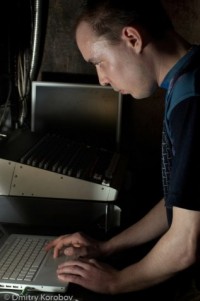
You can visit Myspace.com or lastfm.com to prelisten tracks or listen it on our site at the release form.
[DATAS001]:
S.P.C. - Selected EP 12" tracklist: a1: Main Theme a2: After Skyline b1: South Storm b2: Cloud Dance
purchase this release
Legendary deep house tracks written in period from 2003 to 2005 by Igor Vlasov is open Datasocket's release schedule. From deep dubby sound to ambienty house is exact EP for club and home listening.






 Gennadiy, Hi! Tell us, please, about yourself? How happened you chose music as your profession?
Gennadiy, Hi! Tell us, please, about yourself? How happened you chose music as your profession?